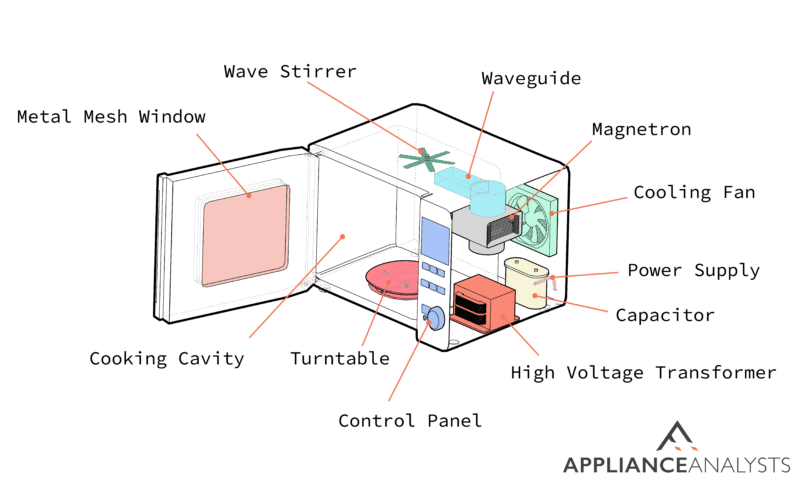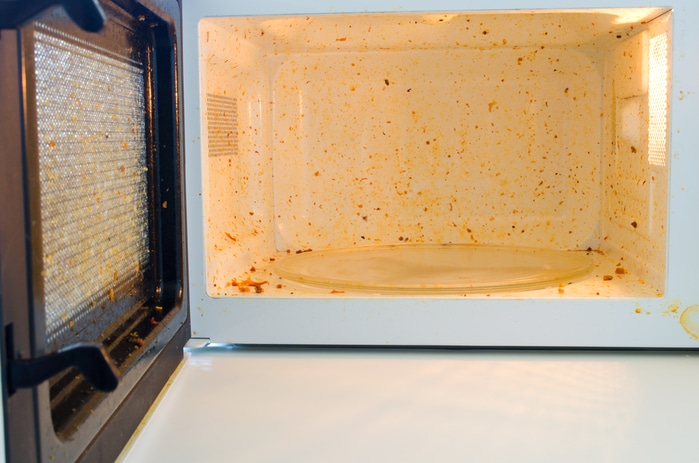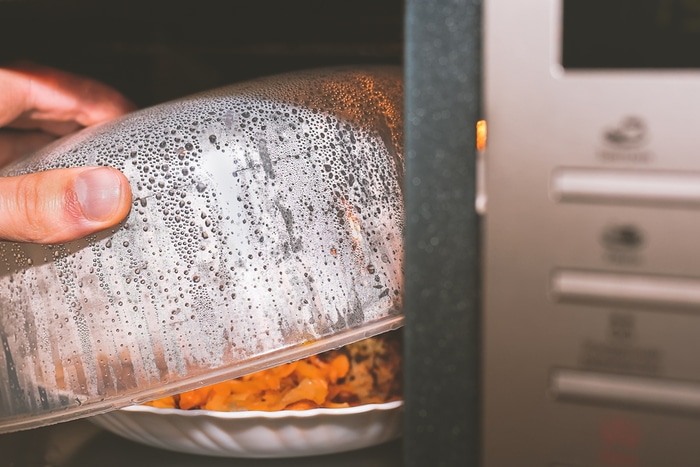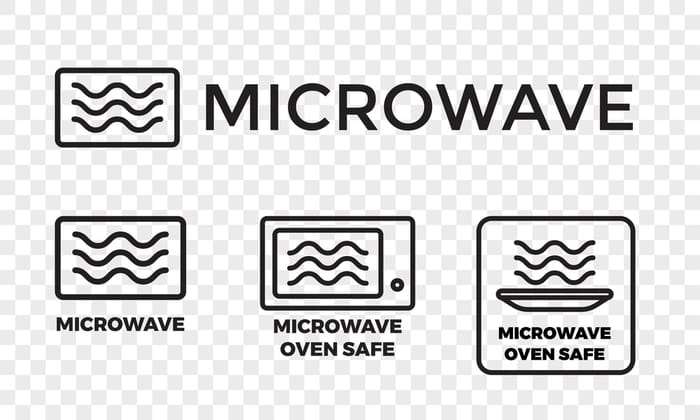We've independently reviewed this article to make sure it's as accurate as we can make it.
To find out more about our article creation and review process, check out our editorial guidelines.
Wondering how much it costs to run your microwave?
Understanding the running costs of a microwave is a common concern. With 90% of Americans owning microwaves, it’s safe to say that a majority of people share the same question.
On average, running an 800-watt microwave that’s always plugged in and used for about 15 minutes daily costs $1 per month or $12 per year. However, the running costs will vary depending on your microwave’s wattage, usage frequency, and the electricity rate in your area.
Read on to learn more about the running costs of your microwave and how to reduce this amount!
Why trust us? This article was written by Craig Anderson and James Blackford.
Craig has helped thousands of other homeowners repair their appliances since 2016. James is one of our resident appliance experts with over 16 years of experience. He currently works as a Master Technician for SquareTrade, and runs his own appliance repair business.
How I’ve Estimated Microwave Running Costs
If you’re a data nerd like me, you’re probably curious about how I came up with the calculator above to know the running costs of your microwave.
Well, wonder no more! I considered a few factors, including the microwave’s power output, the electricity cost in your area, and the number of minutes you typically use it daily.
If you’re not sure about your microwave’s wattage, please look inside the door or near the controls. You can also find this information in the manufacturer’s manual.
Can’t find your manual? Check out our detailed guide on how to find any product’s manual online:
To calculate your microwave running costs, I also considered that microwaves use around 5 watts of electricity per hour when plugged in and are not actively used.
Now, it’s important to note that the results from the calculator are typically on the high side because microwaves are designed to turn the magnetron on and off during cooking to ensure the temperature is just right. This means they don’t use their full power output for the entire cooking time.

So, while our estimate is a great starting point, your actual microwave running costs are likely lower depending on how much you use your appliance.
How to Lower Your Microwave’s Running Costs
While the costs of running a microwave are typically low, you may still be interested in ways to save money on your energy bills.
Here are a few essential tips that will help you lower your microwave’s running costs:
#1 Clean Your Microwave Regularly
My usual advice for lowering the running costs of a microwave is to clean it regularly.
You see, food splatters, grime, or grease can quickly build up and cause your microwave to work harder and longer than needed, which can be both frustrating and costly.

By quickly cleaning your microwave every week, you can make it last longer and save money on energy bills.
Follow these simple instructions to clean it:
- Gather your materials – You’ll need a soft cloth or sponge, a microwavable bowl, and a cleaning solution (equal parts of white vinegar and water, dishwashing soap, and a drop of lemon essential oil).
- Place the bowl in the microwave – Heat the bowl with the cleaning solution and run it for 3–5 minutes at the highest setting. Avoid opening the microwave’s door immediately; please leave the bowl for a few minutes. I find that the steam can quickly loosen up stuck bits of food, dirt, and grime.
- Wipe down the interior – Carefully remove the bowl and turntable tray. Then, take the sponge and wipe the interior; please focus on any stubborn stains. Don’t forget to clean the turntable in the sink with dish soap and water. Wipe the interior with dry paper towels and place the turntable back in the microwave.
- Wipe down the exterior – Wipe down the microwave’s surface with a damp cloth.
Extra tip: Once you’ve finished cleaning your microwave, I recommend putting two tablespoons of baking soda and a cup of water in a microwave-safe bowl. Then, run it on high power for 3 minutes and carefully remove the bowl. Finally, use a damp cloth to wipe down the inside of the microwave.
If you have an over-the-range microwave, don’t forget to remove the grease filter and clean it with hot, soapy water at least once a month.
#2 Use Your Microwave’s Features
Using the auto cook feature can also help you lower your microwave running costs.
The auto cook function automatically sets the correct cooking time and power level based on the food you’re cooking.
It keeps you from guessing the correct cooking time for each dish, which is convenient and energy efficient, as it reduces the likelihood of overcooking your food. The auto cook feature keeps you from running your microwave longer than necessary.
When microwaving food, I always use a microwave-safe plate cover, as it can help retain heat, reducing the cooking time and saving energy. Therefore, I highly recommend using one as well.

A plate cover can also help prevent food splatters and retains moisture, which is great to keep your food from drying out. It also makes the cleaning process much easier!
#3 Plan Ahead
Believe it or not, planning your meals ahead of time can also help you reduce your microwave energy usage.
For example, instead of using the microwave to thaw food, try thawing it in the refrigerator 12 to 24 hours in advance. Thawing beforehand prevents the need to use your microwave excessively, which will help you save money in the long run.
To reduce the running costs, I also recommend separating your food by density and arranging it in the microwave according to its thickness (denser items like meat can take longer to cook than lighter items like soft vegetables).
Separating your food can ensure it heats up evenly and reduces the number of times you need to reheat a meal in your microwave.
Additionally, appliances can consume power even when turned off, so unplugging your microwave when it’s not in use can help you lower its running costs even further.
And don’t forget to leave at least 2–3 inches of space on all sides of the microwave to allow for proper heat dissipation. From what I’ve seen, ensuring adequate ventilation helps to avoid any potential damage to your appliance and its associated repair costs.
#4 Use Compatible Dishware
When microwaving food, I always use compatible dishware to lower its running costs and make it last longer.
You see, microwaves use electromagnetic waves to warm up food. When you use dishware that is not specifically designed for microwave use, it can cause the waves to bounce off or be absorbed. This can pose a health hazard, damage your appliance, and lead to expensive repair costs!
It doesn’t matter what type of microwave you have; whether it’s a countertop microwave or a drawer microwave, you should always use compatible dishware.
By using microwave-safe containers, you can also ensure that your food is cooked evenly, which will keep you from having to reheat your food countless times.
Compatible dishware is typically made of glass, ceramic, and certain plastics. Don’t forget to search for the “microwave-safe” label of the dishware before using it in the appliance.

Never put any type of metal, styrofoam, or any container that is not labeled as microwave-safe in your appliance.
FAQ
Is It Cheaper to Use the Microwave or the Oven?
Typically microwaves are cheaper to run than ovens for certain tasks, such as reheating leftovers.
However, the running costs will vary depending on the cooking time. For instance, using a microwave to cook a large meal is less efficient than using an oven.
Conversely, heating an entire oven for a small portion of food can be an energy waste.
The quicker cooking method is typically the cheapest.
How Much Does It Cost to Run a Microwave for 1 Hour?
On average, running an 800-watt microwave that’s always plugged in for an hour each day costs $4 per month or $48 per year.
However, it’s important to note that the cost of running your microwave for an hour depends on its wattage and the electricity cost in your area.
Conclusion
That about covers it! Hopefully, now you know how much it costs to run your microwave.
Remember, the running costs will vary depending on different factors, such as your microwave’s wattage, the electricity rate in your area, and the usage frequency.
If you want to learn more about taking care of your appliances and saving thousands of dollars, please check out our free Appliance Challenge!
Thank you so much for reading, have a great day!








